12.01.2019
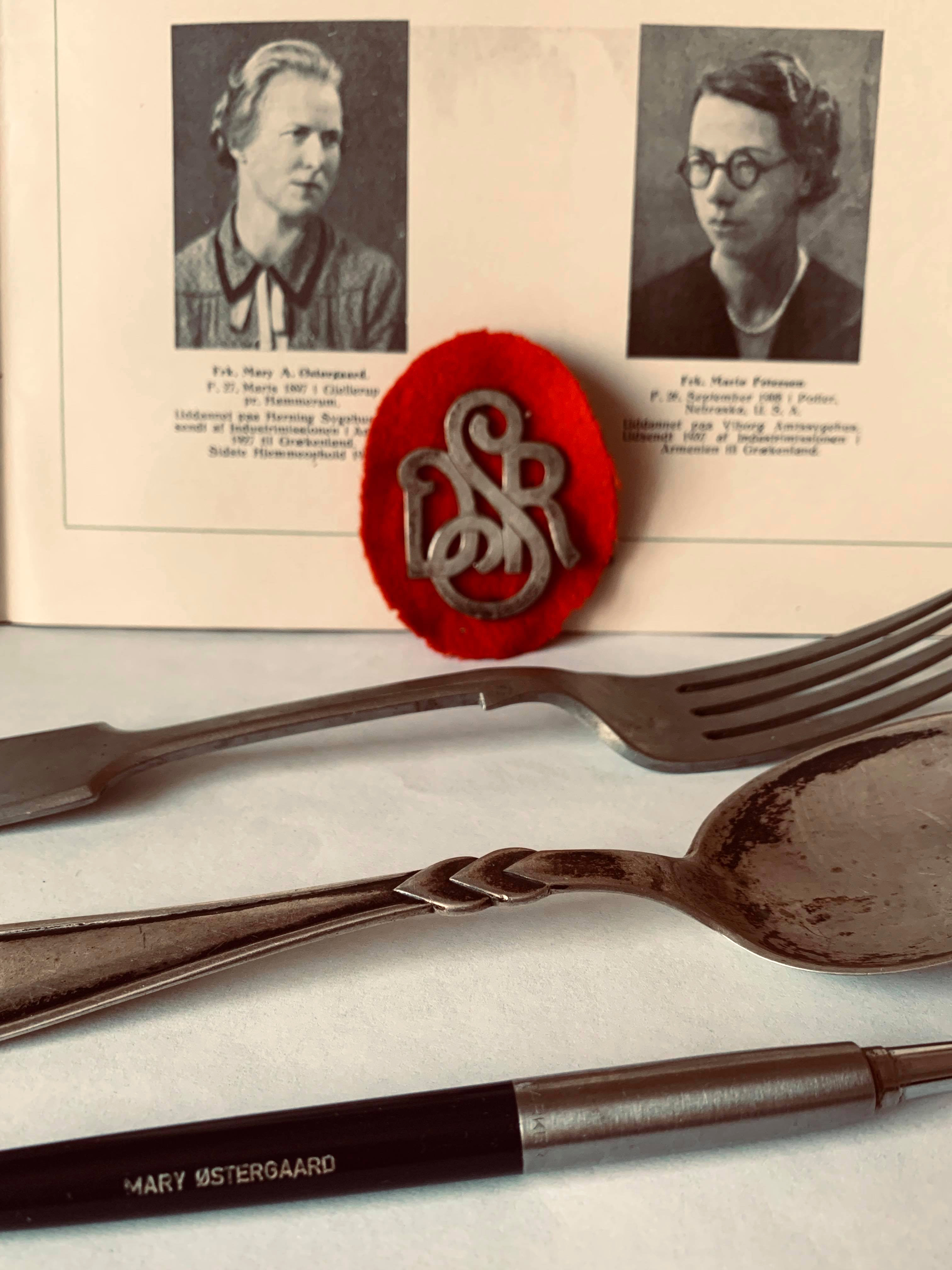
The collection of the Armenian Genocide Museum-Institute Foundation has recently been replenished with the new exclusive materials donated by a Greek-Armenian Sargis Keshishoghlu. The donated units (photos, personal books and items) had belonged to the Danish missionary Mary Anna Østergaard, who had been active in Greece since 1927, greatly contributing to the resettlement and organization of care for the Armenian refugees after the Armenian Genocide. It is hard to say the exact number of the Armenian refugees in Greece because of the lack of statistical data and the constant move of the refugees. The vast majority of the refugees were children. According to the book “The History of Greek-Armenian Community” by Petros Kokkinos, 17 520 orphans were found in Greece, placed in the following orphanages: Utopia, 7 500 orphans, Lutraki 3 300, Corfu 2 720, Oropos 2 000, Zappeion 2 000. Later their number reached 20 000.
Unfortunately, no much information is available about M. A. Østergaard. It is known, that she was born in 1897 in Denmark. In 1927, she was established in Athens. She had been the director of the Danish Care Center that operated until 1961. After the closure of the center, Mary Anna Østergaard continued her mission in Greece. In Athens, “Christian Care Center” was founded by her efforts, where she took care of the sick and the elderly people, along with Srbuhi Hovsepyan from Izmir, and Evdikea Hionidou from Greece. In her late years by the insistence of her relatives she returned back to Denmark in 1987, where she passed away after a few years. She was fluent in Armenian language. In 1955, she won the Danish Royal award for her works. She was a member of “Danish Nurses' Organization,” founded in 1899 in Copenhagen, and which continues its work up to the date.
The collection includes also materials about Srbouhi Hovsepyan and Evdikea Hionidou, who had greatly supported Østergaard.
Sargis Keshishoglou personally knew Mary Anna Østergaard, Srbouhi Hovsepyan and Evdikea Hionidou, and had collaborated with them since late 1970s.
Any donation that can open new pages for the study of the history of the Armenian Genocide is extremely important. The Armenian Genocide Museum-Institute Foundation is grateful for such important archival materials; those materials will be studied and find their worthy place in the permanent or temporary exhibitions, and through publicization will become immortal.

Document, GeKgl. DanskeRidderordenerogMedailler. 1955, Ostergaardwon the Danish Royal award.
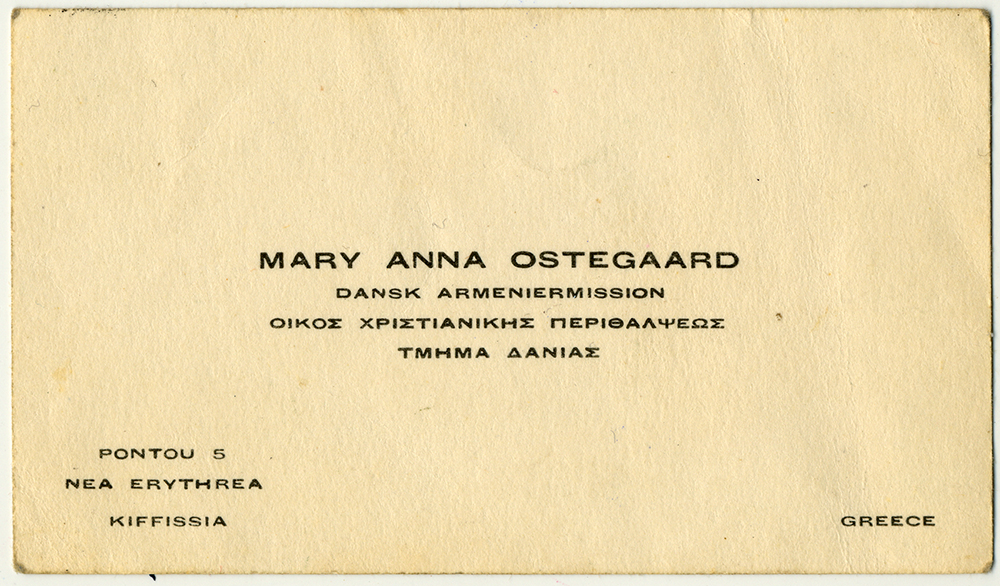
Business card of Mary Anna Ostergaard.
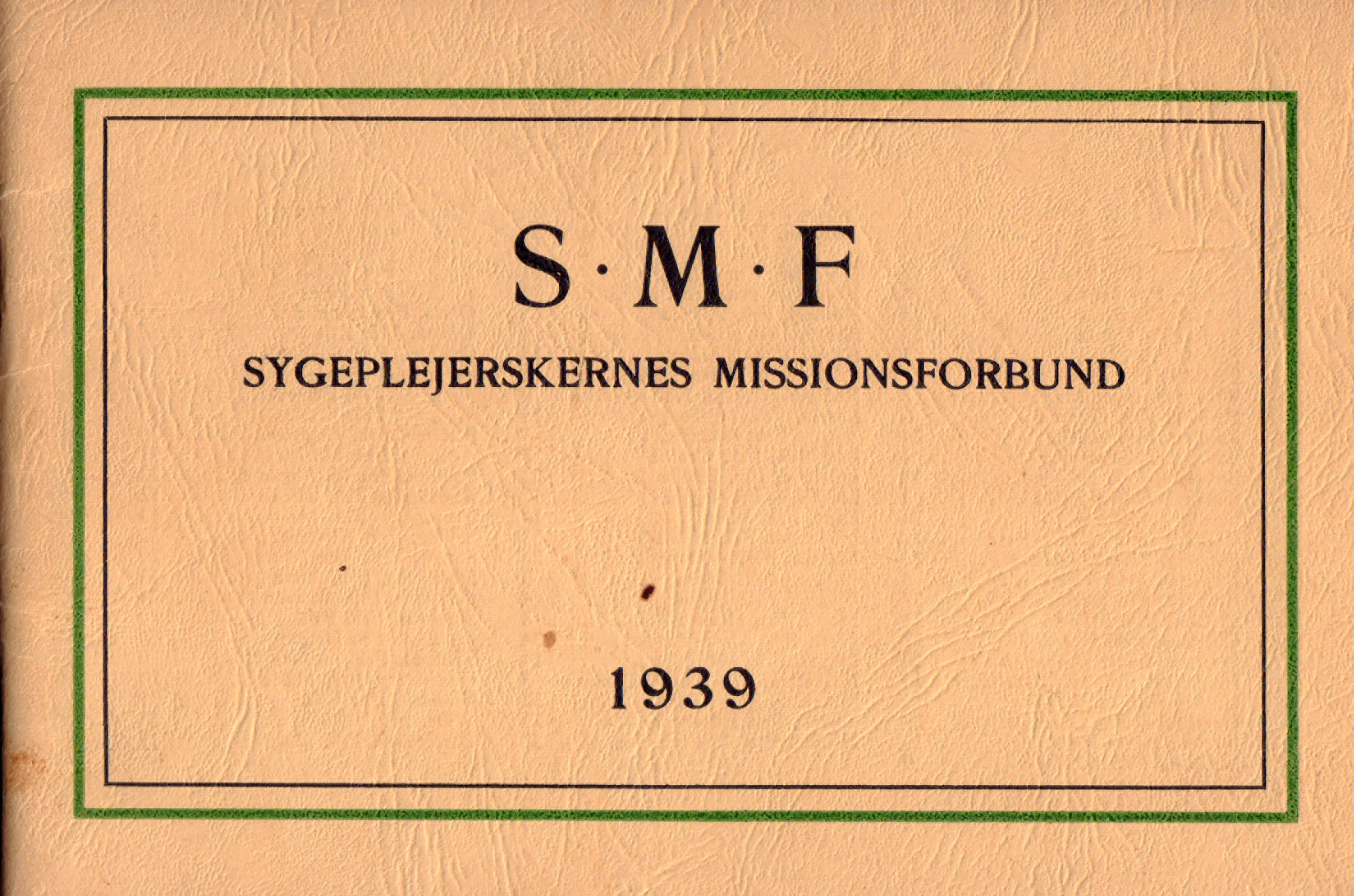
Booklet, “S.M.F. Sygeplejerskernesmissionsforbund”, 1939, København.

Booklet, “S.M.F. Sygeplejerskernesmissionsforbund”, 1939, København.
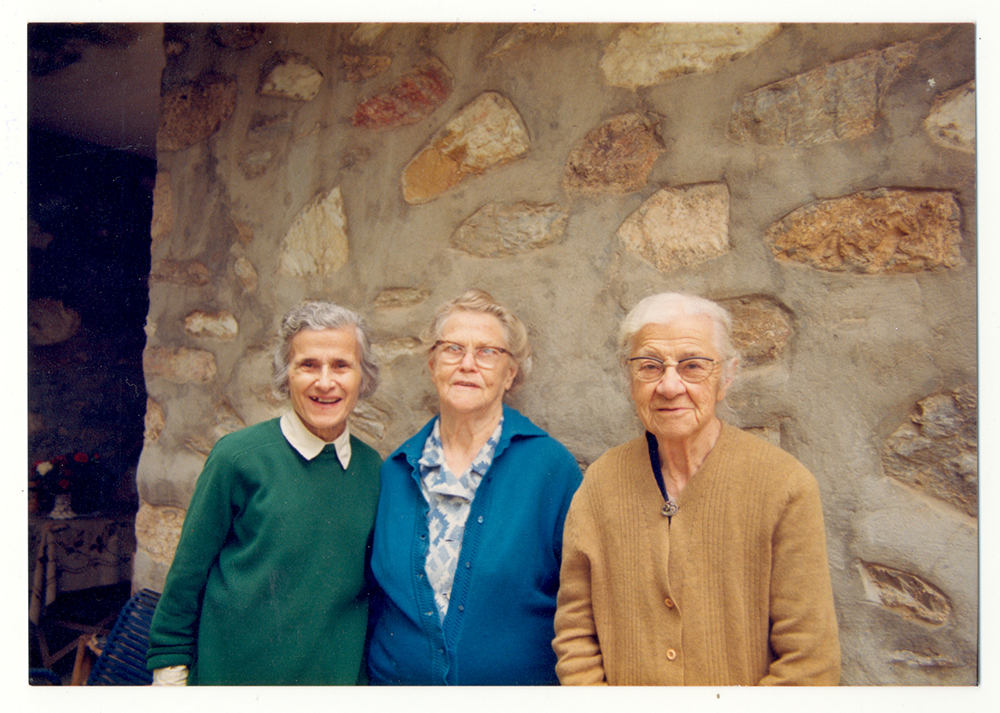
Left to right; 1.Greek EvdikeaHionidou, 2.Danish missioner Mary Anna Ostergaard (Miss Mary), 3.SrbuhiHovsepyan from Izmir. The photo was taken around 1987.
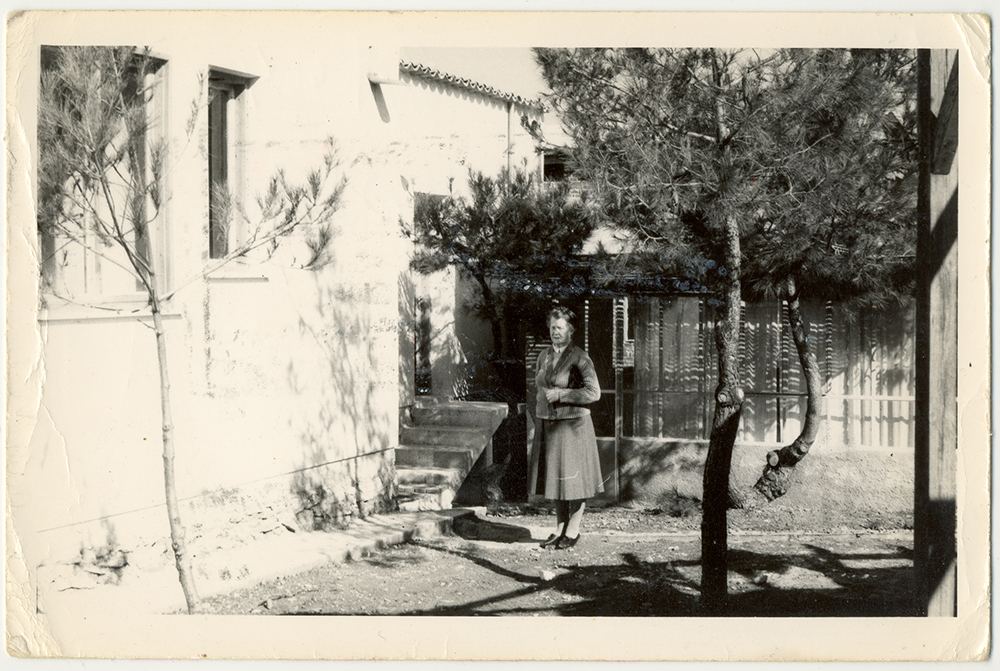
Danish missioner Mary Anna Ostergaard at the summer residence located in 4thFrynis, Athens.

Left to right; SrbuhiHovsepyan, next to her Mary Anna Ostergaard.

Prayerbook, 1934, Costantinopoli,
With a letter of credence; “Remembrance to the genteel lady Mary Ostergaard, Prayerfully,
priest Khoren A. Pechakhjyan, January 1, 1940, Athens”.

Hat Ornament with DSR letters, belonged to Mary Anna Ostergaard.
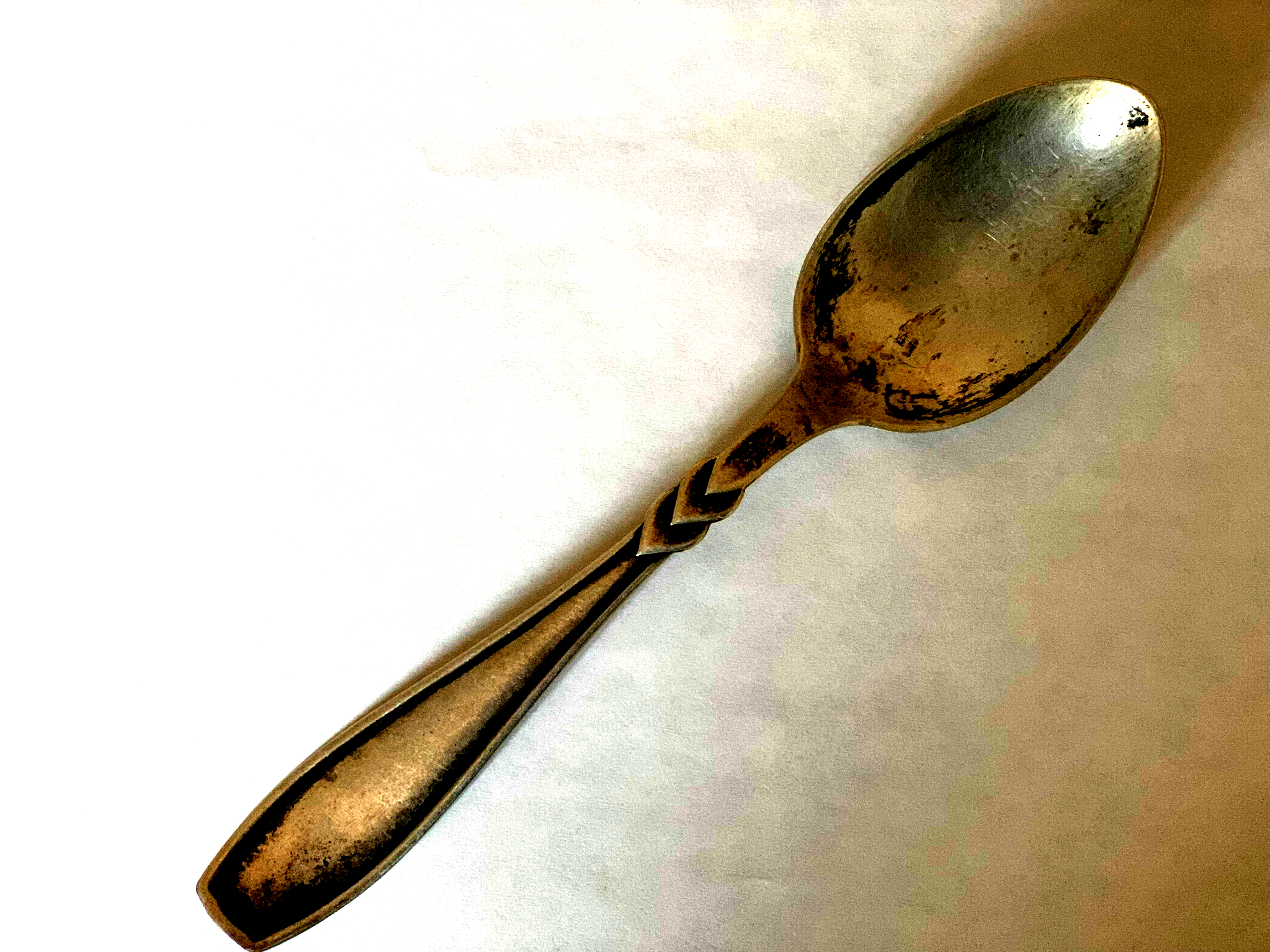
Spoon, belonged to Srbuhi Hovsepyan.

Spoon, belonged to Srbuhi Hovsepyan.
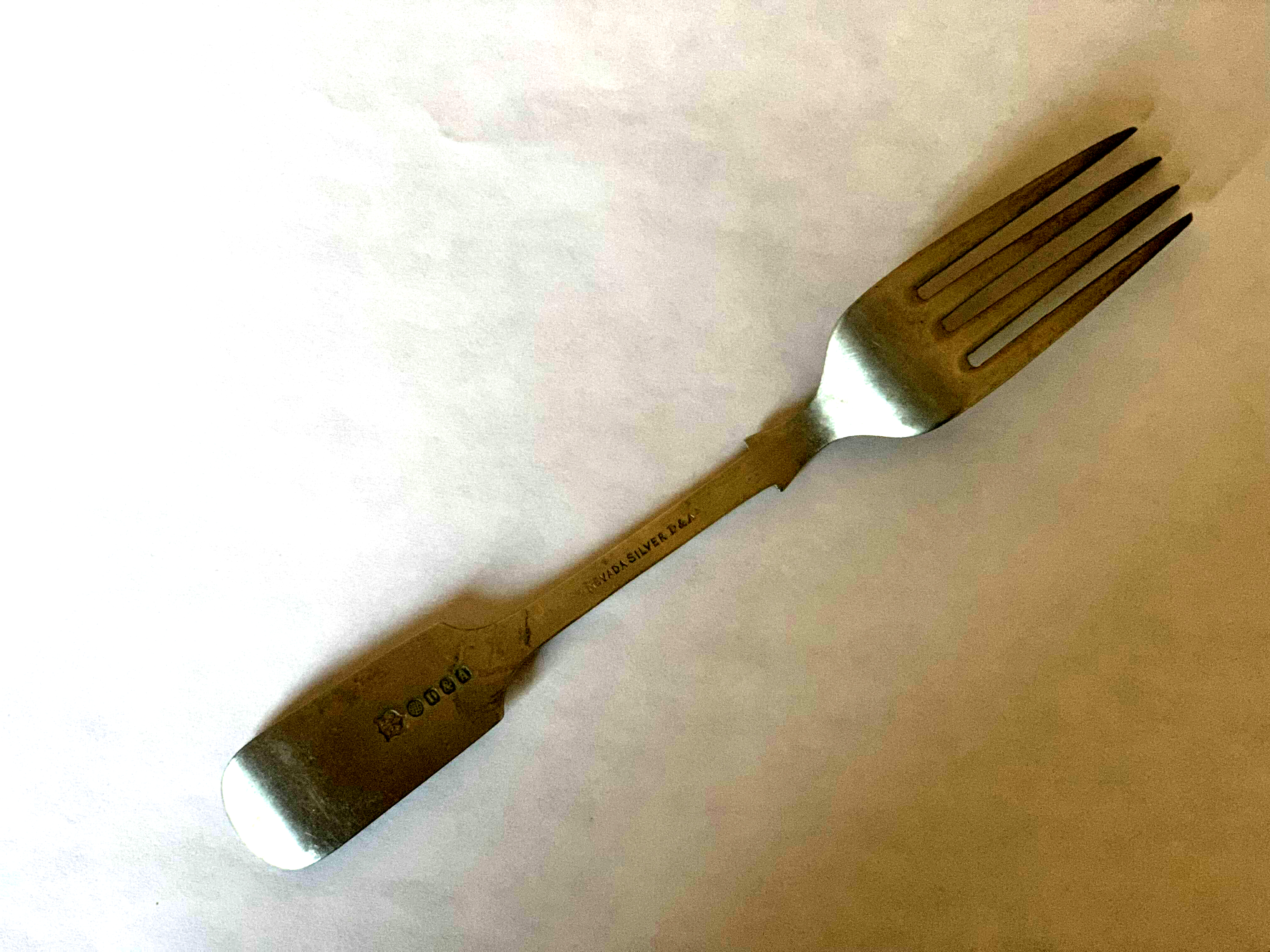
Fork, belonged to Mary Anna Ostergaard.
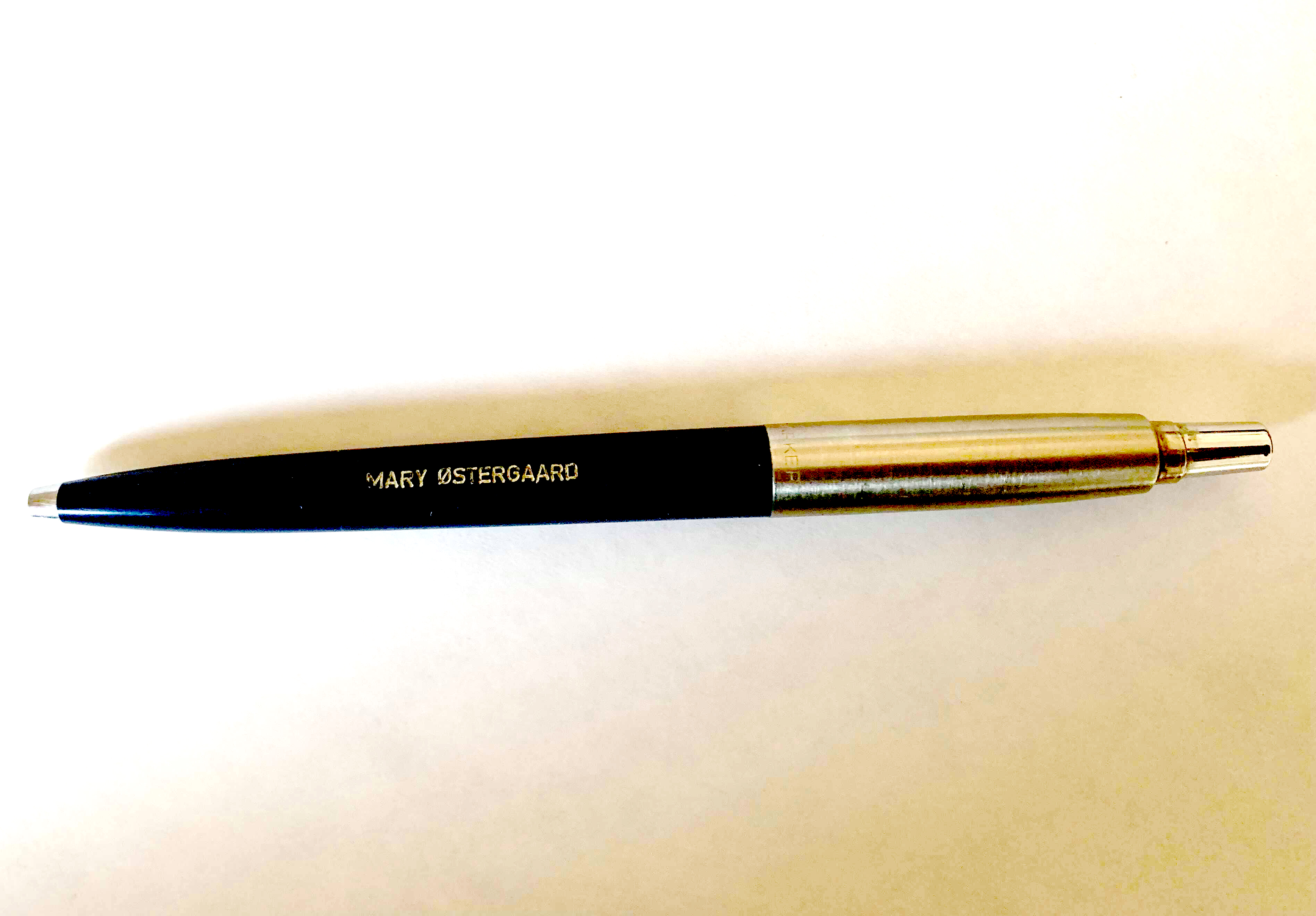
Pen, belonged to Mary Anna Ostergaard.





